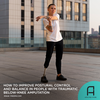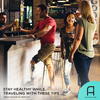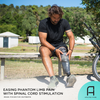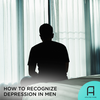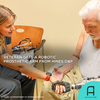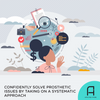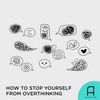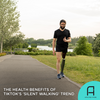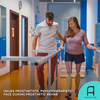Simple Strategies to Get Healthier Starting This Month
Trying to be healthy can sometimes feel daunting. Working out and preparing nutritious meals only seem to add to our endless to-do lists. However, there are ways to get yourself in a healthier state without exerting so much effort. And often, it’s the small changes that can make a significant difference.
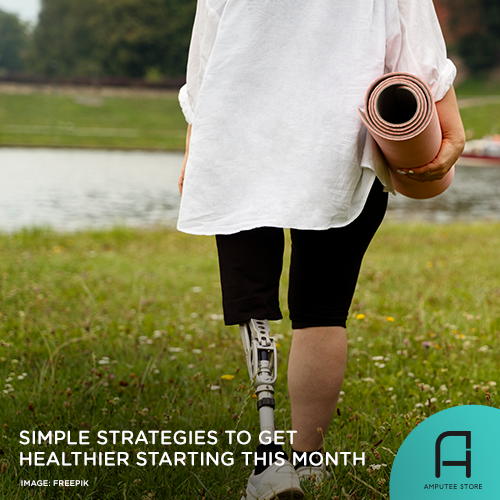
We compiled simple strategies that can help you start getting healthier. You can even start using these tips as soon as you finish reading this article.
Cut back on ultra-processed foods
Eating a lot of ultra-processed foods, such as packaged sweets, ultra-processed meats, and sodas, is linked to health problems like Type 2 diabetes and heart disease. While it’s okay to enjoy these treats occasionally, it’s also important to realize that ultra-processed foods are ingrained in the modern diet. Ultra-processed foods already make up nearly 60% of what the typical US adult eats.
To cut back on ultra-processed foods, pay attention to the ingredients. You’ll surely find things you’ve never stocked in your kitchen pantry, like additives that stabilize, emulsify, and thicken. Furthermore, most ultra-processed foods contain high sodium, sugar, and fat levels.
Focus on getting fresh food
Replace your usual stock of ultra-processed foods with fresh foods, such as fruits, vegetables, eggs, and fresh meat. If you can’t avoid buying packaged food, always check the list of ingredients. The fewer the additives, the better.
Also, do your best to get at least three servings of vegetables and one serving of fruit per day. This will help keep you satiated, along with healthy fats, so there’s limited space for sugary and extra-salty snacks.
Prioritize low-effort movements
We often associate getting healthy with tiring trips to the gym. However, research has found that we can get a lot of benefits from simply increasing how active you are in your daily life. Think of low-effort movements, such as going on a 10-minute post-meal walk, sweeping the floor, getting up from your desk every hour or so to refill your water, or bobbing your leg up and down at your desk.
This type of movement is called Non-Exercise Activity Thermogenesis (NEAT). Research shows that NEAT not only helps with fat loss but can also stabilize blood sugar levels. Furthermore, NEAT can help with insulin resistance, another key factor in maintaining healthy blood sugar levels.
Eat more fiber
The popularity of weight-loss drugs, like Ozempic, lies in their ability to mimic a hormone called GLP-1 that our bodies make to curb food cravings. However, there is another way to increase levels of this hormone through a small change in our diet—eating more fiber-rich foods.
Adding more fiber to our diet is known to keep us feeling sated longer after we eat, making us less beholden to our sweet or salty tooth. Whole wheat, oats (preferably rolled), and legumes can provide fermentable fiber.
However, fiber’s benefits don’t end with satiety; it also helps control blood sugar levels and decrease inflammation and cholesterol. Studies have also found links between eating more fiber and a lower risk of Type 2 diabetes, obesity, cardiovascular disease, and cancer.
Manage back and neck pain
If you’re one of the many people suffering from back and neck pain, you’re probably aware that spending long hours hunched over screens isn’t helping your condition. While you may have tried improving your posture and ergonomic setup, research suggests another way to alleviate tension and stress in your body: taking short movement breaks throughout the day.
When you experience physical or emotional stress, your brain releases hormones that cause your muscles to become tight and guarded. However, taking frequent movement breaks can counteract this stress response by increasing blood flow to your muscles, ligaments, and tendons and delivering essential nutrients to your spine. By incorporating movement breaks into your daily routine, you can help ease back and neck pain and promote a healthier, more relaxed body and mind.
However, if your prosthetic limb causes your back and neck pain, it’s best to see your prosthetist and physical therapist right away. Your prosthetic limb may be due for a realignment, or you may need a new prosthesis. Moreover, your physical therapist can also check your alignment and gait for any irregularities that can be fixed by physical therapy and exercises.
Limit dopamine hits from screens
Have you ever found yourself endlessly scrolling through social media or mindlessly shopping online? Do you find it difficult to resist the temptation of junk food or play video games for hours? According to neuroscientists, these activities trigger a surge of dopamine in our brains.
While we may think that dopamine gives us pleasure, it fuels our craving and desire for more. When we often give in to these urges, dopamine develops a significant but short-term hold on our willpower. By understanding this mechanism, we can adopt better strategies to manage our behavior and achieve our goals.
To limit the control of dopamine over your day, set a timer whenever you want to use social media to avoid dopamine-driven endless scrolling. If a timer isn’t enough, you can block certain apps at specific times. Furthermore, you may want to incorporate regular social media detoxes to retrain your brain.
Nurture connections and forge new ones
Loneliness is linked to all kinds of health problems, including an increased risk of heart attacks and dementia. You can nurture your existing connections by setting up regular catchups. However, if your family or friends live far from you, you can still combat the ill effects of loneliness by forging new social connections. These new connections don’t need to be deep; even casual acquaintances can keep the adverse health effects of loneliness at bay.
Get creative
Engaging in creative activities or immersing ourselves in art can have a positive impact on our mental well-being by reducing stress hormone levels, such as cortisol, and increasing the production of feel-good hormones, like endorphins and oxytocin.
However, you don’t have to limit yourself to one art form. These benefits can be derived from a wide range of artistic pursuits, including cooking, gardening, and even doodling. So, it’s worth exploring different art forms to discover what works best for you and incorporate them into your routine.
The bottom line
Getting healthier doesn’t always have to be a daunting task. By making small changes to our daily routine, we can make a significant impact on our overall health. From cutting back on ultra-processed foods to prioritizing low-effort movements, the tips above can help us move towards a healthier state.
By incorporating these strategies into our lifestyle, we can develop sustainable habits that will benefit us in the long run. Remember, caring for our health is a lifelong journey, and every step we take towards it counts.



































